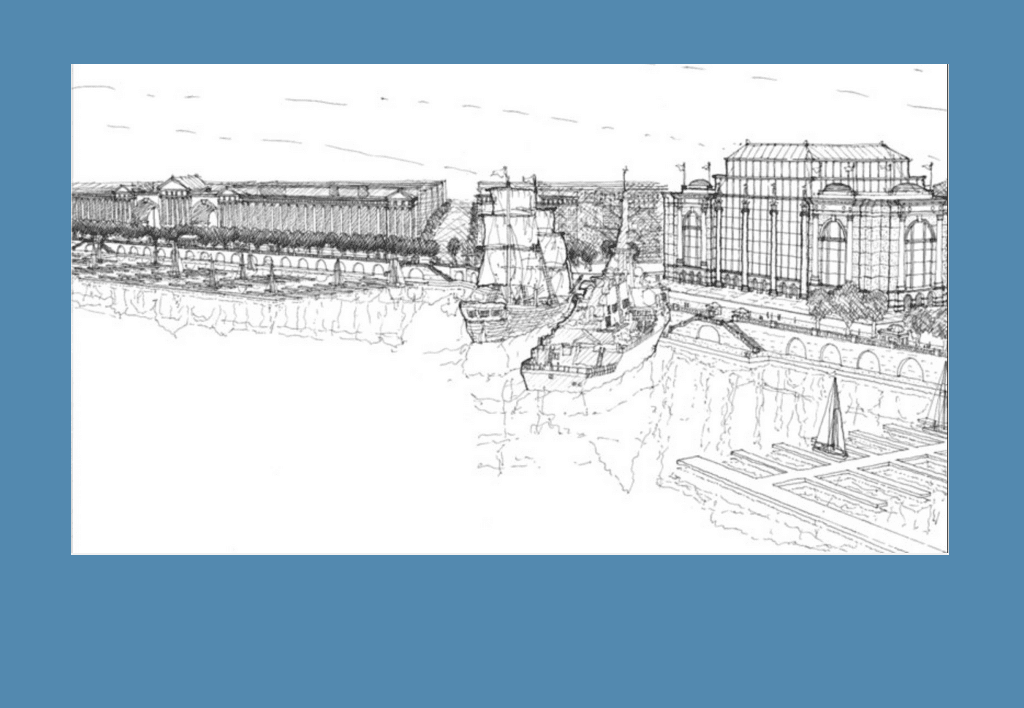Search Posts
Recent Posts
- To Do in RI: 2-day Newport Flower Show – Authors on floral design to speak June 21, 2025
- In the News… quick recap of the week’s news 6.21.25 June 21, 2025
- Providence Art Club Prestigious National Open Juried Exhibition Begins June 21, 2025
- Burn with Kearns: “30-day Shreds” Fail the 50+ Market. What To Do. – Kevin Kearns June 21, 2025
- Rhode Island Weekend Weather for June 21/22, 2025 – Jack Donnelly June 21, 2025
Categories
Subscribe!
Thanks for subscribing! Please check your email for further instructions.

Anacostia waterfront in D.C. – David Brussat
by David Brussat, Architecture Here and There, contributing writer
Photo: Section of proposed Anacostia River Waterfront, in D.C. (Nir Buras)
I grew up in Washington, D.C., and probably gained my affection for classical architecture from its grand public spaces. I went off to college and upon my return found a striking new waterfront along the Potomac River, parallel to M Street and the C&O Canal, in Georgetown. It was exciting not because of but in spite of its architecture, which was a sort of postmodernist mash-up of various forms. But because Washington had for at least a century ignored its waterfronts, not just the Potomac but the Anacostia River, south of the U.S. Capitol and the Federal District, so just having a waterfront with popular restaurants and seating outdoors was a real pleasure for young and old in those heady disco days.
Just out is Robert Steuteville’s column on The Public Square, a blog curated by the Congress for the New Urbanism. He discusses three waterfront projects that have emerged over several decades in D.C., including the one in Georgetown, the only one I have visited. He concludes that they have “re-established Washington, D.C., as a waterfront city. The abundance, variety, easy access, and high quality of new public spaces within these developments have made the two rivers a destination and a welcomed addition to the many amenities in the nation’s capital.”
I have no dispute with that conclusion, but in terms of architecture, all three, predictably, are clunkers. Much preferable, and still possible along some lengths of the two rivers, would be a proposal by architect Nir Buras. He envisions a classically inspired waterfront along the Anacostia River, proposed in 2009, called MacMillan Two, after the MacMillan Plan that gave us D.C.’s National Mall in 1901. An in-depth look at the plan by Neil Flanagan for the website Greater Greater Washington is called “MacMillan Two envisions a classical Anacostia.”
The original plan for the Federeal City was drawn up by engineer Pierre Charles L’Enfant for George Washington in 1791. Additional inspiration for Buras’s plan comes from France. Georges-Eugène Haussmann drew up the plan of Paris we know so well for Emperor Napoleon III between 1853 and 1870. Flanagan sums up the thinking behind MacMillan Two:
[W]e know what is beautiful and what works, and we should follow that. Downplaying strident formal innovation, the relationship buildings have to precedents in a cultural tradition guides design. For McMillan Two, France provides that tradition, particularly L’Enfant’s garden models and the Beaux-arts education of Burnham, McKim, and Olmsted. …
Most buildings would stand six to eight stories tall, with the last two minimized behind a sloped roof. Large tree-lined promenades … would pass throughout the reclaimed area, with particularly verdant ones running along the upper level of the embankment. Spaces created in the embankment promenades would house boat clubs, restaurants accessible from a lower-level embankment.
This plan is plenty ambitious. Buras envisions it as unrolling over a period of a century. Perhaps, as the three waterfront developments in Steuteville’s column become tired and decrepit, and as the one pushed by Nir Buras (who was born in Israel, is author of The Art of Classic Planning, and founded the D.C. chapter of the Institute of Classical Architecture & Art) becomes more popular, it might spread north along the Potomac’s embankments, jumpstarting a revival of Western civilization. What a thought! Start now!
Far fetched, maybe, but here’s hoping for a glorious riverine future in D.C. It has waited long enough.
___
To read other articles by David Brussat: https://rinewstoday.com/david-brussat-contributing-writer/

My freelance writing and editing on architecture and others addresses issues of design and culture locally and globally. I am a member of the board of the New England chapter of the Institute of Classical Architecture & Art, which bestowed an Arthur Ross Award on me in 2002. I work from Providence, R.I., where I live with my wife Victoria, my son Billy and our cat, Gato. If you would like to employ my writing and editing to improve your work, please email me at my consultancy, dbrussat@gmail.com, or call (401) 351-0451.
